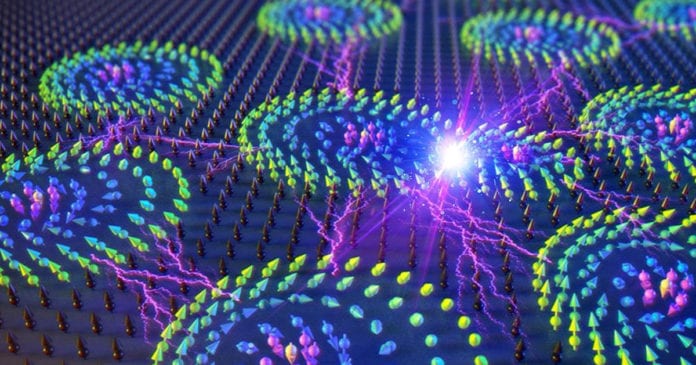Entanglement is one of the biggest mysteries of modern atomic physics. The laws governed by our understanding of the quantum mechanical world are consistent with the results that we have gotten so far. However, there are no logical proofs for these laws.
One such phenomenon that can be observed but cannot be explained is quantum entanglement. We know how to induce the phenomenon, but that is the extent of our knowledge about it. There exists no plausible explanation for why it happens. Nonetheless, it is a phenomenon that the researchers have utilized to great advantage in several new, emerging technologies.

Researchers have set a new record by entangling together 15 Trillion atoms in a big achievement for the field of quantum physics. The physicists were able to link these 15 trillion atoms together in a kind of hot soup. The sheer magnitude of this attempt has grasped the attention of the scientific community and for good reasons.
The particles were ‘entangled,’ which means that any action we perform on any one of the particles instantaneously affects the others. The reaction time is always instantaneous regardless of how big the distance between the particles is.
The application of quantum entanglement is very wide-ranged. The phenomenon is the core principle behind the workings of several technologies, such as quantum computing and new-age cryptography. The experiment could be a breakthrough for several such technological efforts. One of its applications could be in creating more accurate sensors that could be utilized in the detection of gravitational waves and even dark matter.
This experiment was special for one reason. The temperature at which these atoms were entangled was millions of times hotter than what the usual entanglement experiments go through. This supposed ‘cap’ on the temperature is because of the very nature of entanglement itself. The links that are formed during this process are extremely fragile and can be easily broken.

A slight vibration of the particles or a minute interference from the outside can lead to the breakage of these quantum links. To avoid any unintended breakages, researchers bring the temperature of these atoms down to the extremely low range to avoid any extraneous activity. By reducing their activity, the atoms are less likely to bump into things and suffer a breakage.
The experiment might prove to be a landmark achievement in quantum mechanics. The biggest hurdle in the application of this mysterious phenomenon has been the cryogenic support system needed to maintain the apparatus. Hopefully, this experiment will pave the way for a wider application of the phenomenon.
Further Reading:


